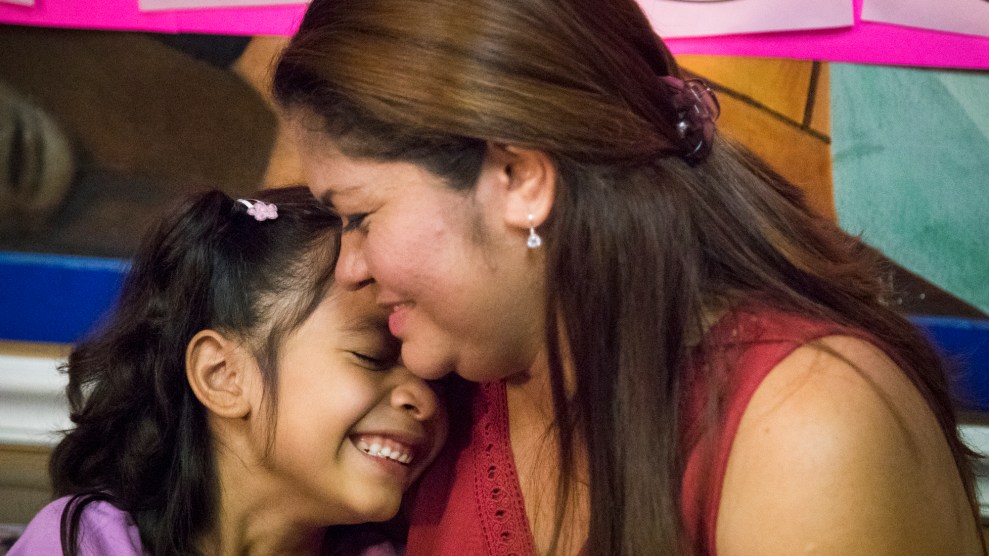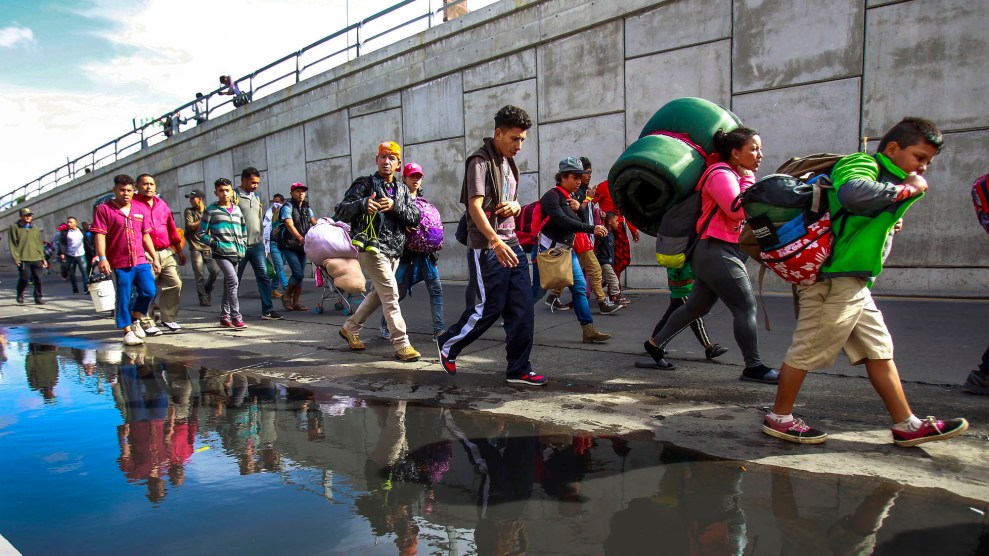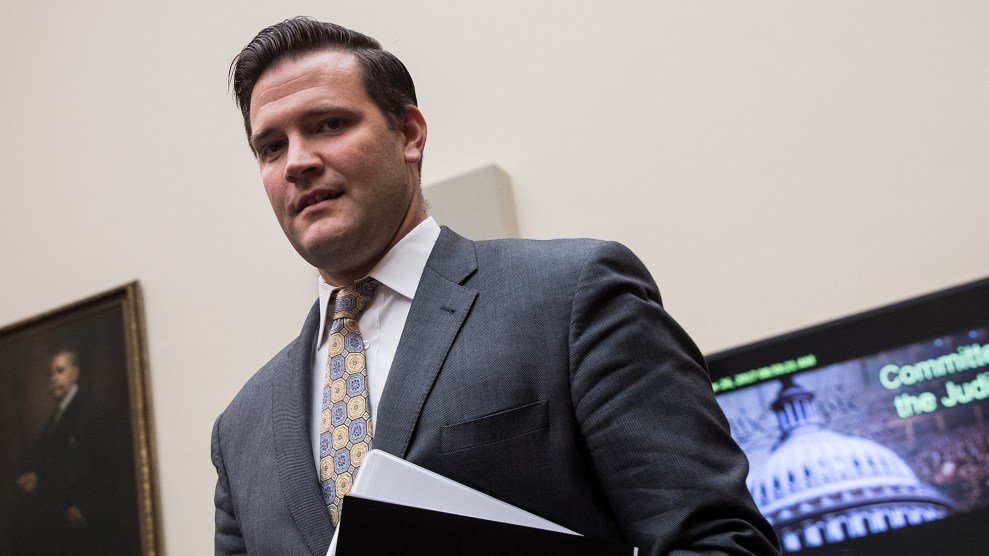
Six-year-old Allison and her mother, Cindy Madrid, at a Houston, Texas, press conference in July 2018. They were separated for one month under the Trump administration's now-abandoned family separation policy. Marie D. De Jes's/AP
A new government report released Thursday found that thousands more children were likely separated from their parents and then released from government custody than what the Trump administration had previously disclosed. The Trump administration still does not know how many families were actually split apart, because it did not have a centralized tracking system by June 2018, about a year after its first family separation policy.
The report by the Department of Health and Human Services’ Office of Inspector General is the latest to show how the Trump administration launched a family separation policy without a system for keeping track of those families, much less a plan to reunite them. The Department of Homeland Security’s inspector general released a similarly damning report in October.
The inspector general’s office is still not sure that HHS is able to accurately track separated families. “The jury is still out on that,” an official in the office told reporters Thursday. “We really think it’s too soon to tell.”
In June, federal judge Dana Sabraw forced the Trump administration to reunite separated children who were still in HHS custody. The government eventually identified more than 2,700 separated children in court filings. Almost all of those children have now been reunited or released to sponsors, who are usually close relatives.
But Sabraw’s preliminary injunction did not require the government to identify children who were separated and had already been released from custody before the court order. HHS estimates that “thousands” of children meet that criteria, according to the new report. The children released prior to the court order would most likely have gone to live with a sponsor, though they could have been deported or removed from HHS custody after turning 18.
The Trump administration began separating more families after then-Attorney General Jeff Sessions prioritized immigration prosecutions in April 2017. In July 2017, DHS launched a pilot program that separated families by referring parents to be prosecuted by the Justice Department for crossing the border without authorization. The children were then categorized as “unaccompanied minors” and transferred to HHS. By August 2017, 3.6 percent of children in HHS custody were separated from parents, up from 0.3 percent in late 2016.
Despite the dramatic increase in separations, DHS and HHS did not create a functioning database to keep track of separated families. HHS officials eventually tracked separated children using an Excel spreadsheet. By June 2018, there was still no centralized system.
That didn’t stop DHS from misleading the public about its ability to keep track of separated families. As the department claimed in a June fact sheet, “There is a central database which HHS and DHS can access and update when a parent(s) or minor(s) location information changes.” In October, DHS’s inspector general “found no evidence that such a database exists.”
HHS was still finding separated children in its shelters months after the government submitted its initial list of separated children to Sabraw. The reasons behind that discrepancy make the Trump administration’s negligence particularly clear. “[I]n some cases, children who had not previously been willing to speak about their situations became more comfortable with shelter staff and reported that they had been separated,” the inspector general report states. “In other cases, parents’ legal representatives contacted ORR regarding children that they believed to be separated.”
The HHS inspector general found that at least 118 children were separated between July 1 and November 7. The percentage of separated children entering HHS custody decreased right after the federal judge stopped most separations. But in the months since, the percent of separated children entering HHS custody has steadily increased—rising from 0.47 percent in July to 0.91 percent in the first week of November. That is far lower than under the family separation policy, but the November rate is still three times higher than in late 2016.
Sabraw’s order generally blocks DHS from separating families, but allows the government to continue doing so to protect child welfare. DHS said 65 of those 118 children were separated due to their parents’ criminal histories. But DHS did not always provide HHS with details about those offenses. Three of the children were separated because of their parents’ immigration history alone.
Eighteen children were separated due to gang affiliations. There are major concerns about how DHS decides that a parent has a gang tie that requires separation. In October, Mother Jones reported that a 20-year-old mother from Honduras was separated from her two-year-old daughter in April due to alleged gang ties. She had told DHS that she was abused by a gang member, and DHS provided no evidence that she was in a gang. DHS’s case for separating them was further undermined when they were reunited after 10 weeks apart.
Lee Gelernt, the American Civil Liberties Union’s lead attorney in the family separation case, called the policy a “cruel disaster” in a statement. “This report reaffirms that the government never had a clear picture of how many children it ripped from their parents,” he said. “We will be back in court over this latest revelation.” The case is currently on hold, though, due to the shutdown forced by President Donald Trump.
















